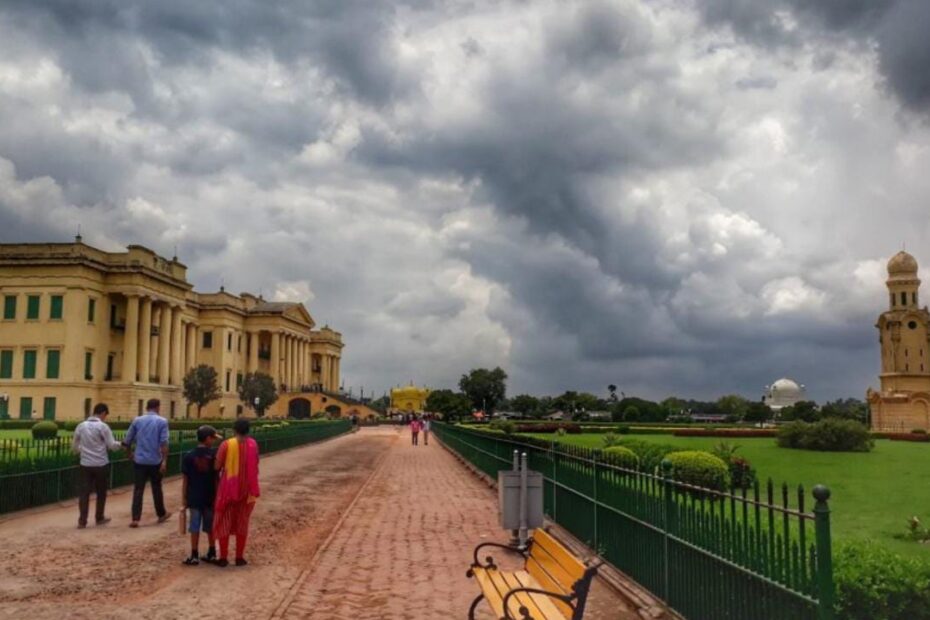Murshidabad is a wonderful district on the banks of the Bhagirathi River and was the capital of Bengal in 1717.
Moreover, this district is famous for its rich cultural heritage, architectural splendor, and historically significant landmarks.
ADVERTISEMENT
Murshidabad continues to be a prominent tourist destination for numerous palaces, historical gardens, and mosques.
Additionally, this district is world-famous for its exclusive production of silk.
In this article, you will get to know about the following places to visit in Murshidabad,
- Cossimbazar palace
- Khosh Bagh
- Hazarduari palace
- Nizamat imambara
- Kathgola
- Katra Mosque
- Jahan Kosha Canon
- Nasipur palace
Let’s see each of these places in detail.
1. Cossimbazar Palace
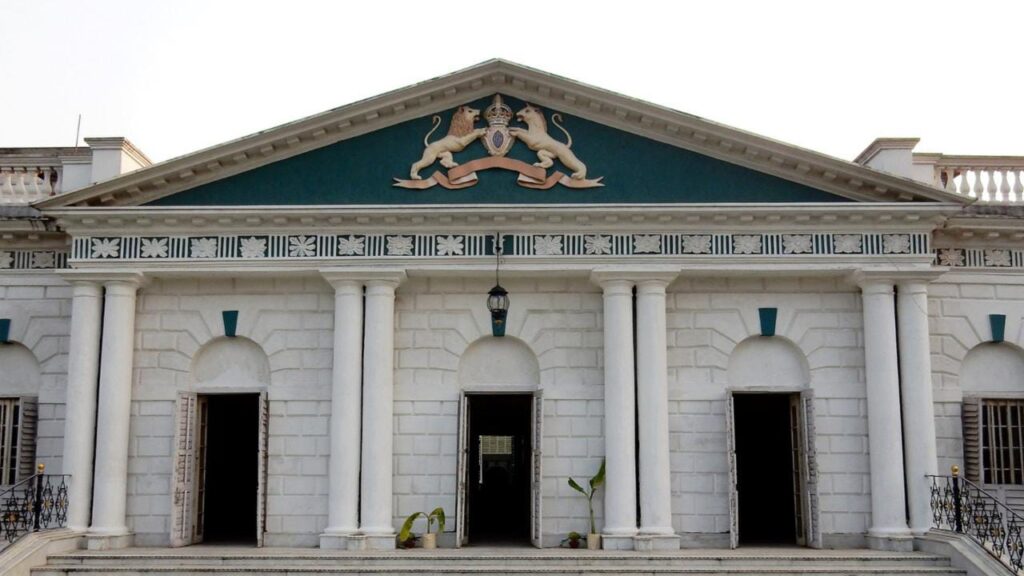
Cossimbazar Rajbari is a magnificent palace located in Murshidabad with a blend of Indian and European architecture.
This opulent royal colonnaded facade was founded by the Roys in 1700.
Later the Roys transformed some of the rooms into guest rooms and a walk-through museum.
The ideal time to visit is during Durga Puja when the family celebrates the auspicious rituals in the hall with an open courtyard on a marble platform named ‘Chandi Mandap.’
ADVERTISEMENT
The bedrooms, central ballroom, and dining area are intricately and luxuriously designed.
The magnificent bedrooms, and dining halls with “Tana Pakha,” attractive paintings, jaw-dropping chandeliers, finely carved dressing tables, and Victorian-era furniture, are ideal for lavish stays and wedding festivities.
Nagalingam, The Sabha Ghar, the Malkhana, and the Clock Tower are some of the interesting historical attractions in Cossimbazar Rajbari.
2. Khosh Bagh
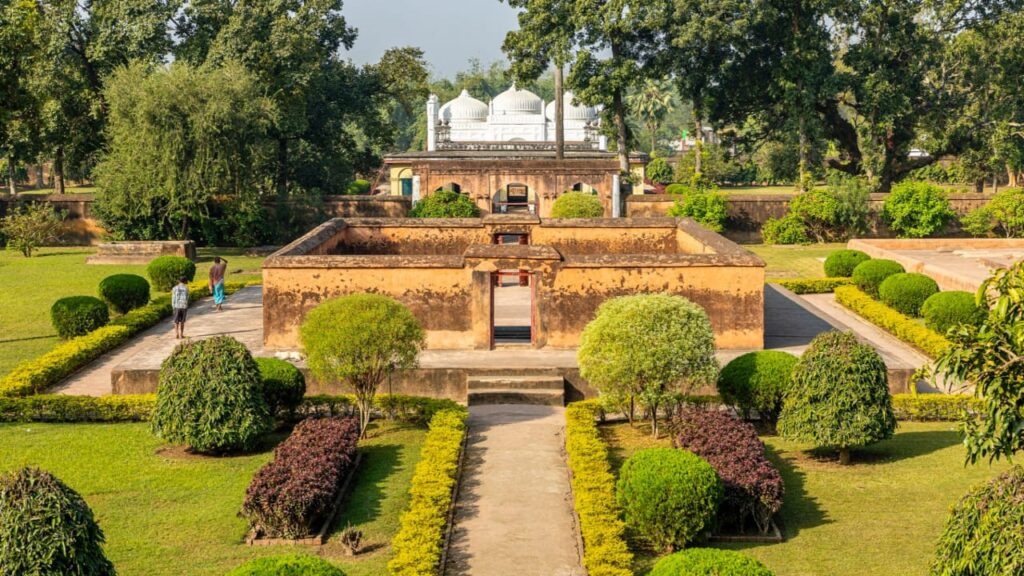
Khosh Bagh or the “Garden of Happiness” is a place nestled on the western shore of River Hooghly. Belonging to the then Nawabs of Bengal, it is a tranquil garden cemetery, still holding its mysteries and beauty.
Covering an area of approximately 7.6 acres, the place showcases excellent Islamic architecture. Nawab Alivardi Khan, the first Nawab of the state of Bengal built the Cemetery in a planned way, which we see today.
High walls enclose the area and the outside walls that octagonal bastions. Inside there is a mosque. Along with this, you will get to witness the graves of Ali Vardi Khan, his family, Siraj Ud Daula, and Lutfunnisa Begum.
The graves of the two nawabs are protected under a mausoleum enclosed by an arcade veranda. It is eerily mesmerizing and intriguing at the same time. The vista gives an impression of a time stop, taking us to an era that we have read in books and only can imagine. Nature is still flourishing there, taking over the history and present time.
3. Hazarduari Palace
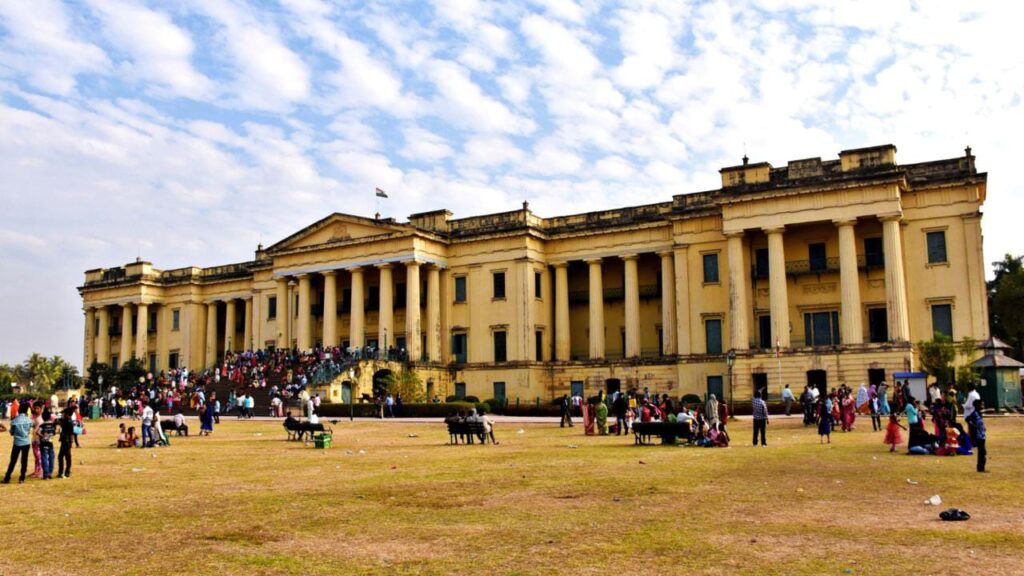
Hazarduari Palace is one of the iconic destinations that is spread over a massive area of 41 acres on the Kila Nizamnat Campus.
As the name suggests Hazarduari means “a thousand doors”, which signifies that the palace is, embellished with 1000 gates.
The fascinating fact about the gates is that 900 doors are real and the rest are false doors created to perplex the visitors.
ADVERTISEMENT
The breathtaking beauty of the palace and its splendor multiply due to the charm of the Bhagirathi River that flows near the palace.
People who are interested to know about the Nawabi lifestyle should visit this palace.
You can also see the Greek and Italian architectural styles of the palace.
The palace has been converted into a museum and now you can see many antique treasures such as the Sword of Siraj Ud DAULa and vintage cars.
You can also visit the Nizamat Imambara, Bacchawali Tope & Murshidabad clock towers within the complex.
4. Nizamat Imambara
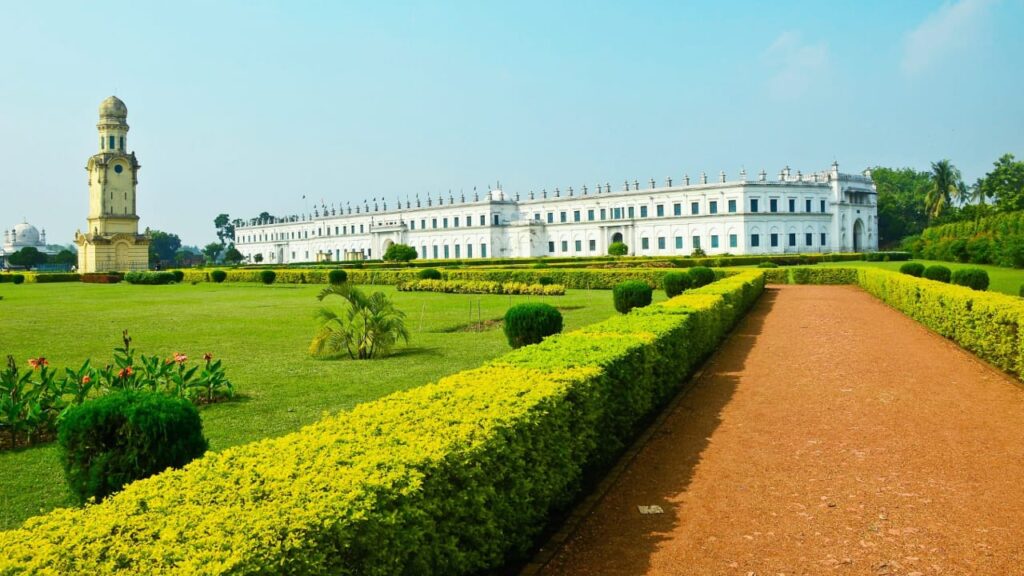
The Nizamat Imambra is considered to be the largest Imambara in the globe. It is a congregation hall for the Shia Muslims and was constructed by Nawab Siraj Ud Daulah in 1740 AD.
Following a few years, in 1847 it was again reconstructed after it was perished by fire. Splendid Islamic architecture can be noticed throughout the building including intricate works of art. It is literally a masterpiece built during the Nawab rule.
Situated inside the Hazarduari Palace Complex, this is an important monument not just historically but also in the present. It is of great religious significance and exhibits nothing but grandeur. The entire structure is painted white and green with gigantic entrance gates.
Visiting the place is like dropping by an age that we have never dreamt of before. A pathway leads to the front of the Nizamat Imambara which is again dotted with old-style street lamps. It is simply astounding. Take a guide with you to learn all about the Imambara.
5. Kathgola
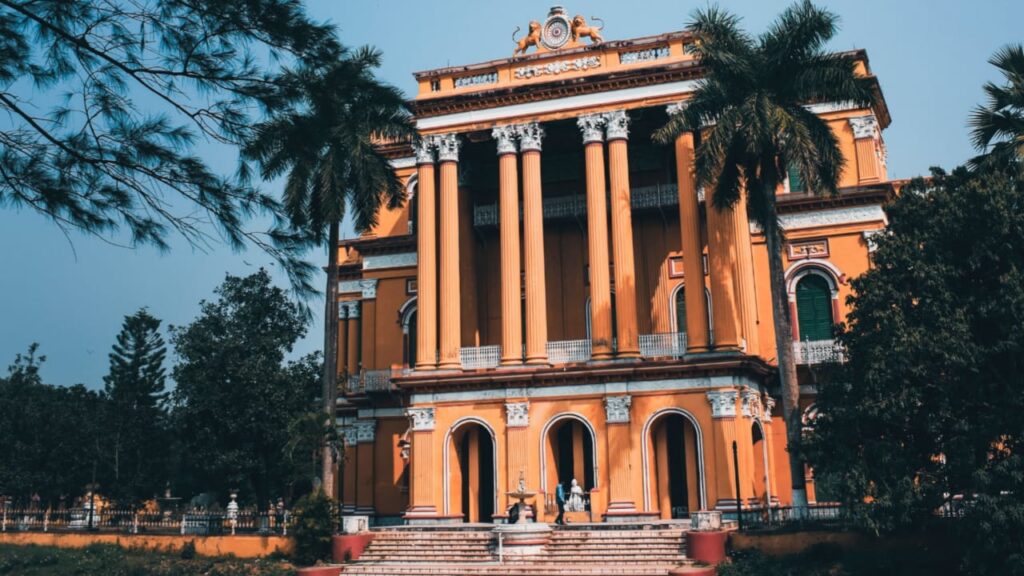
Famed for the past, Kathgola is a beautiful locale in the historic city of Murshidabad. It is one of those places that is a must-visit when in the city. Once the capital of the entire region of Bihar, Bengal, and Odisha, it still preserves the charm of royalty and glory.
The ambiance of the place is a bit chaotic but in a good way. The air gives out the historic vibe no matter what alley you walk through. Exploring around, the first place that you will come across is Kathgola Palace.
ADVERTISEMENT
This sumptuous palace looks stunningly gorgeous and is four-storeyed. This sophisticated old structure is an unmarked combination of architecture as well as art. Once furnished with all the luxuries, furniture, paintings, etc, all are now on display in the palace cum museum.
Surrounding the palace is the Kathgola Garden. This is another view to admire. People say that in the bygone days, black roses covered the entire garden that stretches for 30 acres. However, the well-manicured garden only contains mango trees in recent years.
Next up on the list is the Adinath Temple. Also called the Kathgola temple, it is placed in the marvelous Kathgola Bagan. The shrine was built for and devoted to Bhagawan Adishvar. Bhagawan is seated inside the temple in a padmasana posture. This view is absolutely peaceful. Way more waits for you in the lovely locality of Kathgola.
6. Katra Mosque
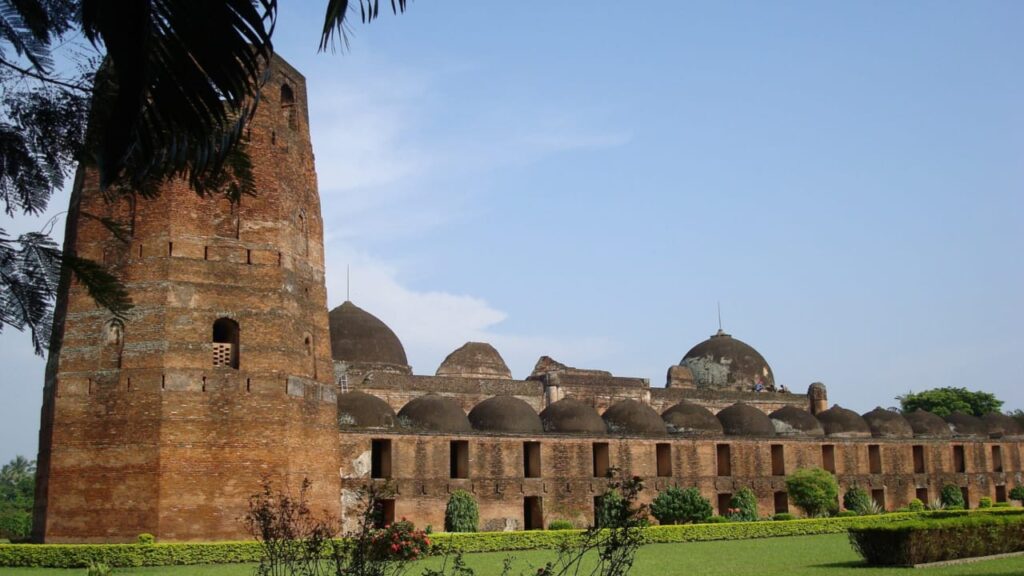
The Katra Masjid is both a mosque and the resting place of Nawab Murshid Quli Khan Built between 1723 and 1724.
It is situated on the city of Murshidabad’s northeastern edge and is a monument of immense cultural significance.
The tomb of Murshid Quli Khan is built upon his grave in the entrance staircase.
It is a significant center of Islamic study that adds to the religious importance of the mosque.
The two enormous corner towers with musketry apertures are the most noticeable aspect of the Katra Mosque.
Additionally, the eye-catching architecture of the brick-built mosque, like the double-storied domed cells, minarets, Quran inscriptions, arches, and pillars makes this place a must-visit destination in Murshidabad.
7. Jahan Kosha Cannon
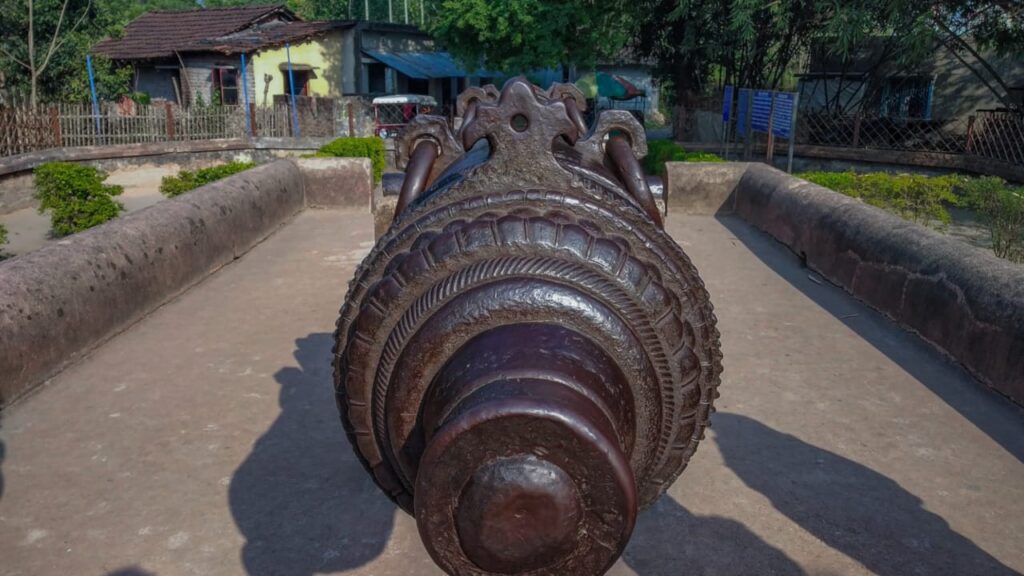
The Jahan Kosha Cannon, also known as “The Destroyer of the World” Cannon, was created in 1637 AD by Dhaka-based craftsman, Janardan Karmakar.
It is also known as the greatest weapon of India. It is placed in Topekhana, near the Katra mosque.
Today, this cannon rests on a Carriage with wheels and is surrounded by the roots of the Peepal tree.
The enormous cannon was commissioned by Daroga Shree Mohammad and built under the supervision of Hara Ballav Das.
ADVERTISEMENT
Although the Karmakars were blacksmiths by trade, they were also responsible for the foundation of some engineering marvels.
The canon is made of 8 metals or Astadhatu and you can see the Trunnions and ironwork of the carriage even today.
The cannon is more than 7 tons in weight.
It is 17 feet and 6 inches in length and 3 feet in width with the circumference of the mouth more than 1 foot.
8. Nasipur Palace
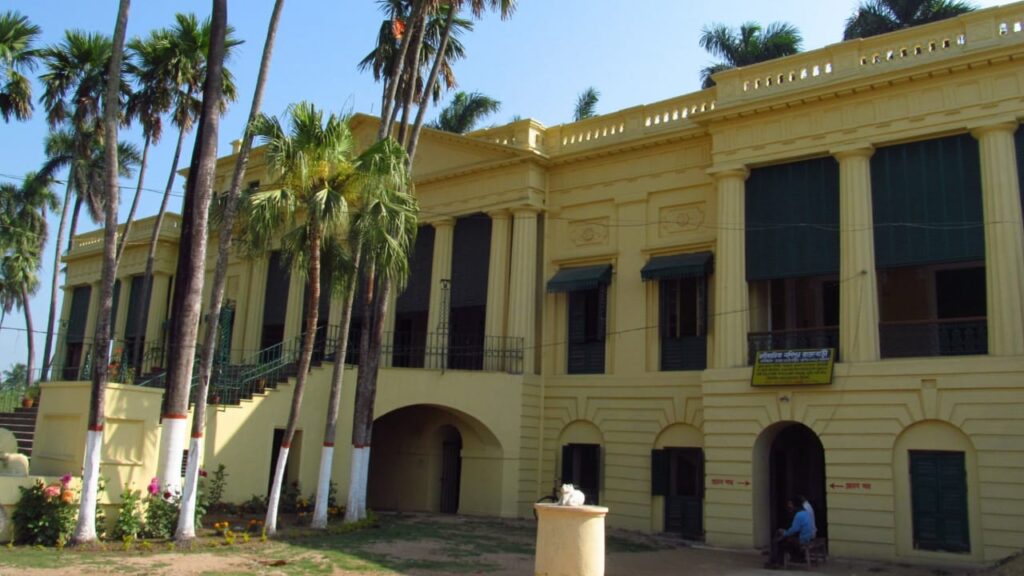
The Nashipur Palace, also called Nashipur Rajbari, is located in the village of Nashipur in the Murshidabad district.
It is situated right next to the palace which Raja Debi Singha erected. He was the strict tax collector of the Nawabi era.
Raja Kirti Chandra Singha Bahadur constructed the present palace in 1865.
Due to its similarities with the Hazarduari Palace, it is often called the miniature of the Hazarduari Palace.
ADVERTISEMENT
The grand staircase and the huge vertical erected columns are two of the iconic architectural features of the Nasipur Palace.
There was a sizable entertainment hall inside the palace where personalities like Hirabai performed.
Today the Nashipur Rajbari has been converted into a museum displaying personal belongings of the Nashipur royal family, farms, legal documents of tax collection of that time, and other treasures.
The royal palace also has a temple of Ramchandra, and it is one of the largest temples in Murshidabad.
These are some of the best places to visit in the Murshidabad district.
Getting a glimpse of the royal palaces and iconic historical landmarks is really a blessing for visitors who loves to know about the history during the eras of the Nawabs, and also those who are interested to know about the rich legacies of Bengal.
Other places to visit in West Bengal
- Ramdhura (Kalimpong) – 5 Points You Must Know About
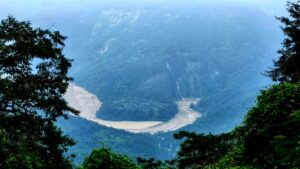
- Daragaon, Burmaik (Kalimpong) – 5 Points You Must Know About
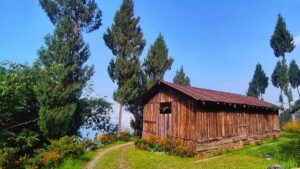
- Ghurni – Exploring Krishnanagar’s Hidden Gem And Its Clay Dolls

- Mim Tea Garden (Darjeeling) – 5 Points You Must Know About
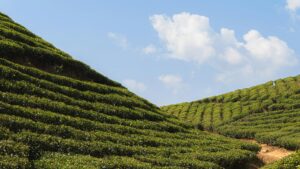
- Bandel Church (Hooghly) | The Basilica of the Holy Rosary
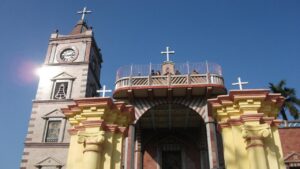
- Bethuadahari Wildlife Sanctuary (West Bengal) – 5 Things To Know

Disclaimer: Some of the links provided in the article may contain affiliate links. This means when you book or buy something using these links, you help support the website at no extra cost.
